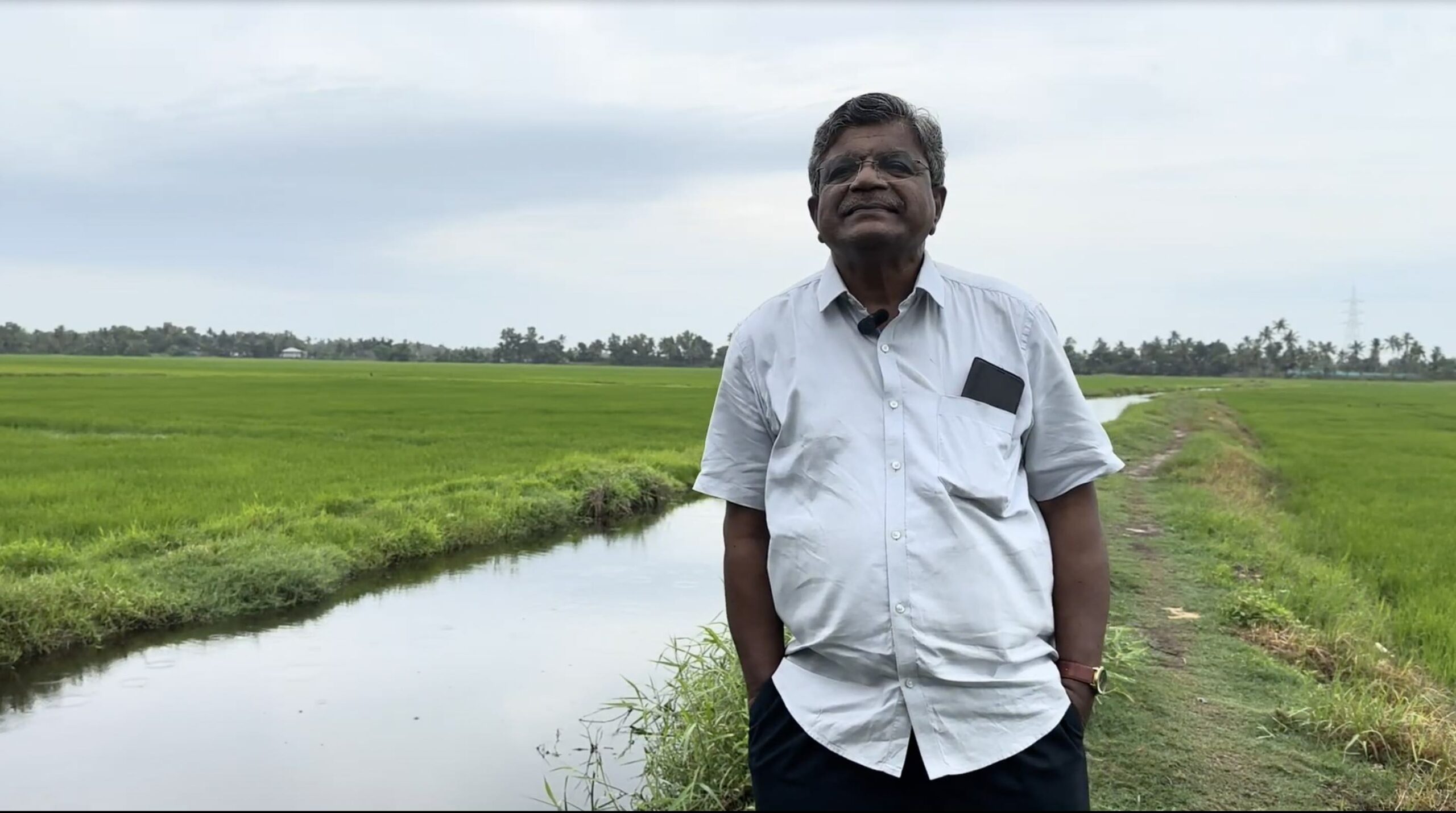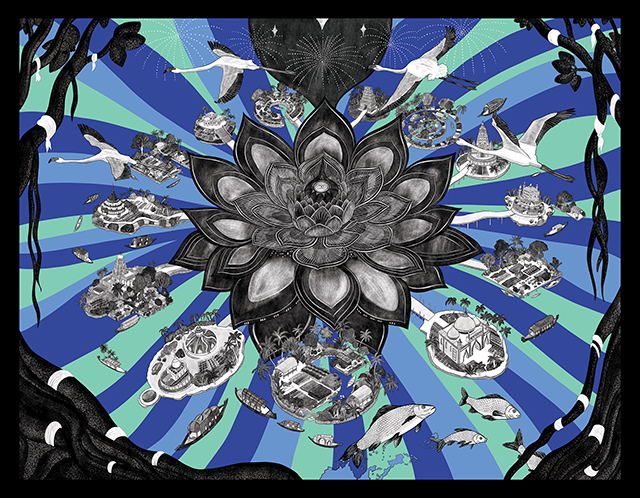
Dr. K.G. Padmakumar is a lecturer, researcher and deputy director at Kerala Agricultural University, a leading institution in the field of agriculture and environmental sciences. With extensive expertise in water management, sustainable agriculture and climate change adaptation, Dr. Padmakumar has dedicated his career to exploring innovative solutions for agriculture below sea level and the associated environmental challenges. His work at Kerala Agricultural University, particularly in the Kuttanad region, has led to the development of agricultural practices that integrate biodiversity and carbon sequestration, thereby contributing to the resilience of farming communities in the face of climate change impacts
Agriculture below sea level: a legacy and a challenge in the face of climate change
Kuttanad, an area where rice cultivation has been developed in an innovative way, is a unique model of agriculture below sea level. Located approximately 1 to 1.5 metres below sea level, this region has seen its farmers transform vast expanses of water into arable land through the construction of circular dykes. These dykes have made it possible to pump out water and cultivate approximately 550 square kilometres of land, thereby ensuring food security for the population. Dr Padmakumar emphasises: « We must salute these adventurers who have created land from vast expanses of water.‘ However, with rising sea levels, this traditional method of farming is facing new challenges. ’If the sea level rises by 60 centimetres or a metre, they are worried about what will happen to the agricultural situation, » he explains.
Adaptation strategies: rice and fish, integrated farming
Faced with these challenges, the International Research and Training Centre for Farming Below Sea Level has developed innovative adaptation strategies to maintain agricultural productivity in the context of climate change. One of the strategies developed is the ‘rice and fish’ system. This method involves growing rice during the summer season, when the water level is low, and practising fish farming during the rainy season. ‘On the same piece of land, rice is grown at the right time, and during the monsoon season, fish farming is practised,’ explains Dr K.G. Padmakumar. This approach integrates biodiversity into food production and increases the resilience of agricultural systems to flooding.
Integrated agriculture, which is based on integrating biodiversity into food production, is also presented as a viable solution. « Kuttanad is a biodiversity reserve, with a variety of animals, plants and fish that are part of a multi-product agricultural system, » says the director. Traditionally dominated by rice monoculture, the region is now adopting more diversified practices, integrating elements such as livestock farming and the cultivation of various aquatic plants, thereby contributing to the sustainability of local agriculture.
Carbon sequestration and sustainable agricultural practices
Another important aspect of agriculture in Kuttanad is carbon sequestration. ‘Rice fields act as carbon sinks, storing carbon dioxide in the soil,’ he points out. This approach helps combat climate change by increasing the level of organic carbon in the soil. By adopting organic farming practices, such as using organic sediments from rivers to fertilise the land, Kuttanad maintains a sustainable agricultural system and respects the principles of natural farming. ‘Good agriculture is therefore a way of tackling climate change,’ he adds, highlighting the benefits of ecological land management for carbon storage.
Waste management and adaptive agriculture in the face of climate change
Waste management is a major challenge in the fight against climate change. In this context, the centre has developed innovative solutions, such as converting household waste into fish feed. ‘Food waste is used directly to feed fish in a tank.’ This system, which recycles organic waste while producing fish and fresh vegetables, is part of an approach to local resource management and waste reduction.
Wastewater from these tanks is also used to fertilise plants, contributing to vegetable production. This circular resource management model could have a significant impact in terms of waste reduction and optimising food production, while adapting to the constraints imposed by climate change.
Floating agriculture: a solution for areas affected by rising sea levels
In response to rising sea levels, floating agriculture is emerging as a potential solution for coastal regions such as Kuttanad. ‘Floating raft agriculture, made from water hyacinth, allows farmers to grow vegetables on the water,’ he explains. This approach, already practised in some South-East Asian countries, allows vegetables to be grown quickly, particularly leafy vegetables, which can be harvested in just 30 days. ‘Vegetables can be harvested quickly, and once the aquatic plants have decomposed, the space can be reused for new crops,’ he adds.
This system is particularly suited to flood-prone areas, where space for cultivation is limited by water. By using floating rafts, farmers can continue to grow vegetables while adapting to climate change and rising sea levels.
Innovative solutions for a sustainable future
Kuttanad is a striking example of how farming communities can adapt to the challenges of climate change. Through integrated farming strategies, carbon sequestration practices and innovations such as floating agriculture and circular waste management, the region is developing sustainable solutions to ensure food security while addressing climate challenges. These initiatives offer interesting avenues for other regions facing similar issues related to sea level rise and environmental change.
Testimonies from the same panel
